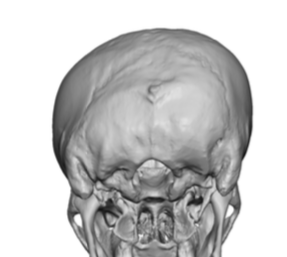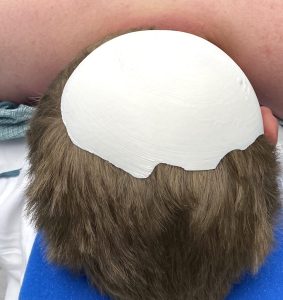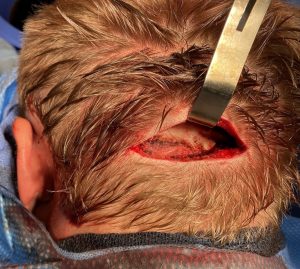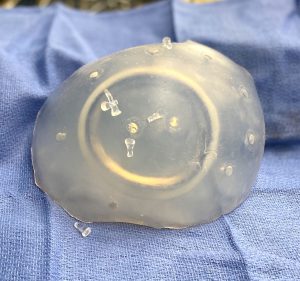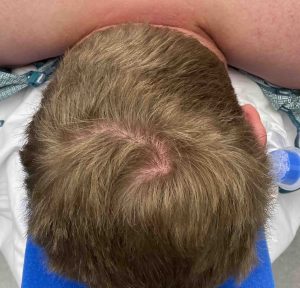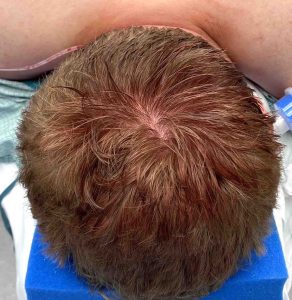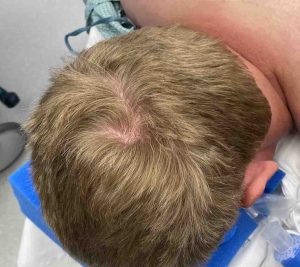Background: Plagiocephaly is the most well known congenital/developmental skull deformity outside that of the craniosynostoses. Because the skull shape deformations may be mild to moderate in severity and there are no functional neurologic sequelae associated with them, it is presumed by some patients and practitioners in particular that there is no reasonable treatment for the patient’s concerns. But this is based on the more historic knowledge of what is possible in the early time period after birth from cranial vault surgery to external helmet therapies. This is not reflective of more contemporary awareness of what can be done in aesthetic skull reshaping procedures in adults.
The single most common plagiocephaly concern in an adult is the unilateral flatness on the back of their head. This is often the greatest area of craniofacial deformation since many plagiocephalies originate from deformational forces on the back of the head. While understandably the male with a shaved head or very short hair would be the most concerned about a visible flat back of the head, male patients with good hair density are often concerned as well.
The custom skull implant is the premiere method of treating the flat back of the head in plagiocephaly because of its superior aesthetic results. Besides the small incision needed to place it, the scalp over the flat skull area is very tight and what is placed beneath need to have a good push and resist any scalp recoil to deform it. This is why fat injections or, more commonly, the use of bone cements work poorly. They are displaced/compressed by the tight scalp recoil at their placement allowing for a very limited push off of the bone (in the case of fat injections not at all), creating a suboptimal skull reshaping effect.
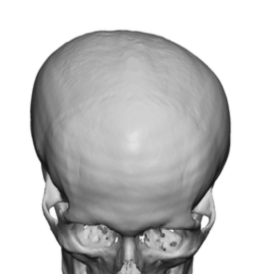
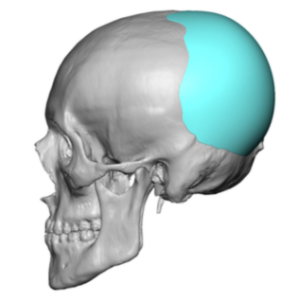
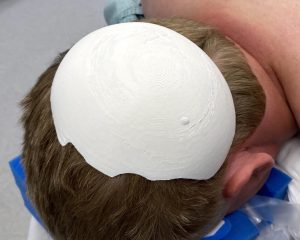
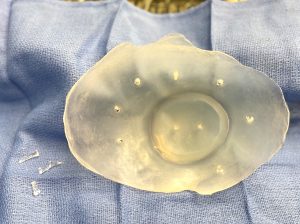
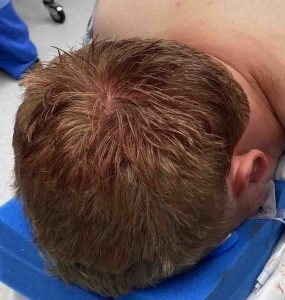
Case Highlights:
1) The most common skull affected by plagiocephaly is on the back of the head.
2) While men with a shave head or lack of hair are the most highly concerned about how the back of their head looks, men with good hair coverage may still find a flat side on the back of the head aesthetically disturbing.
3) A custom skull implant is the most aesthetically effective method for treating the flat back of the head.
Dr. Barry Eppley
Indianapolis, Indiana




